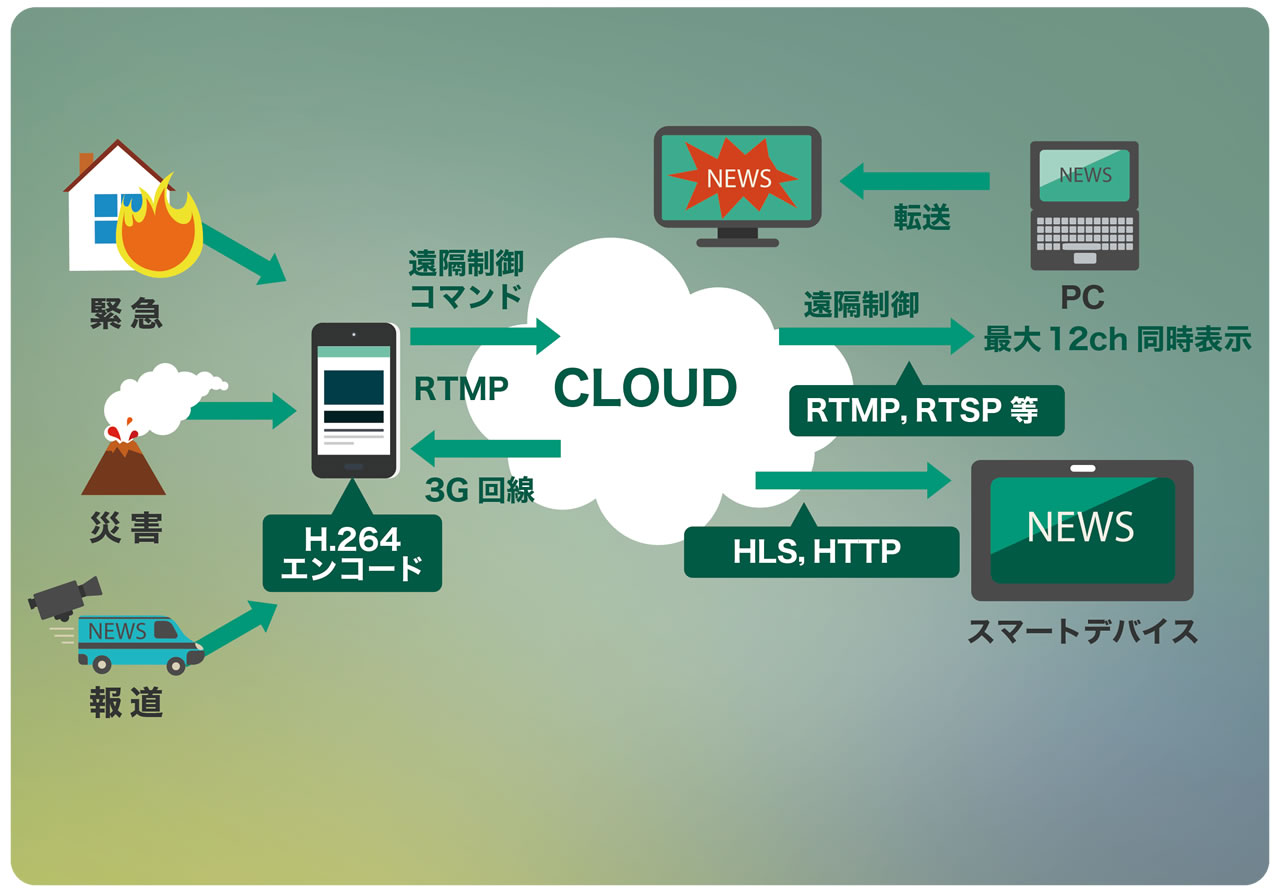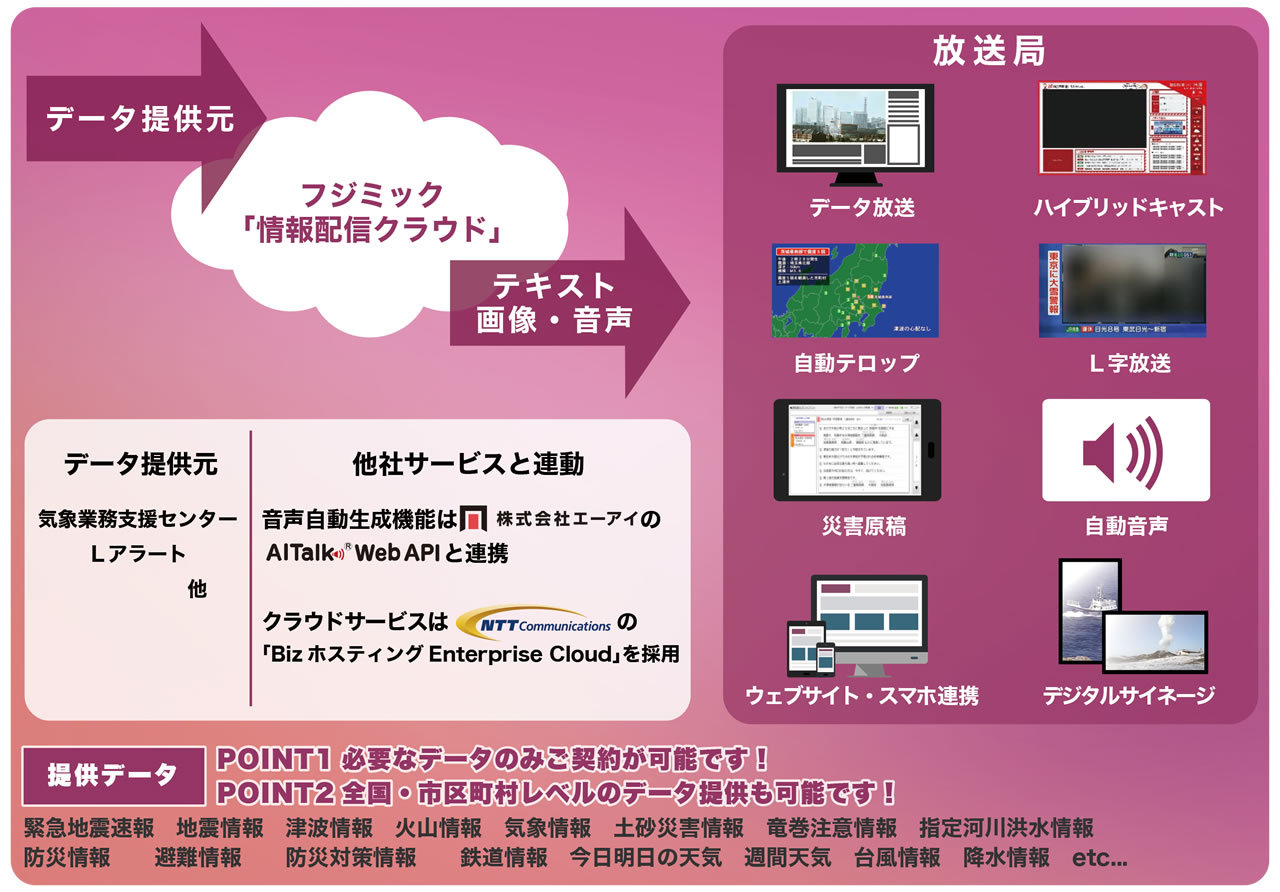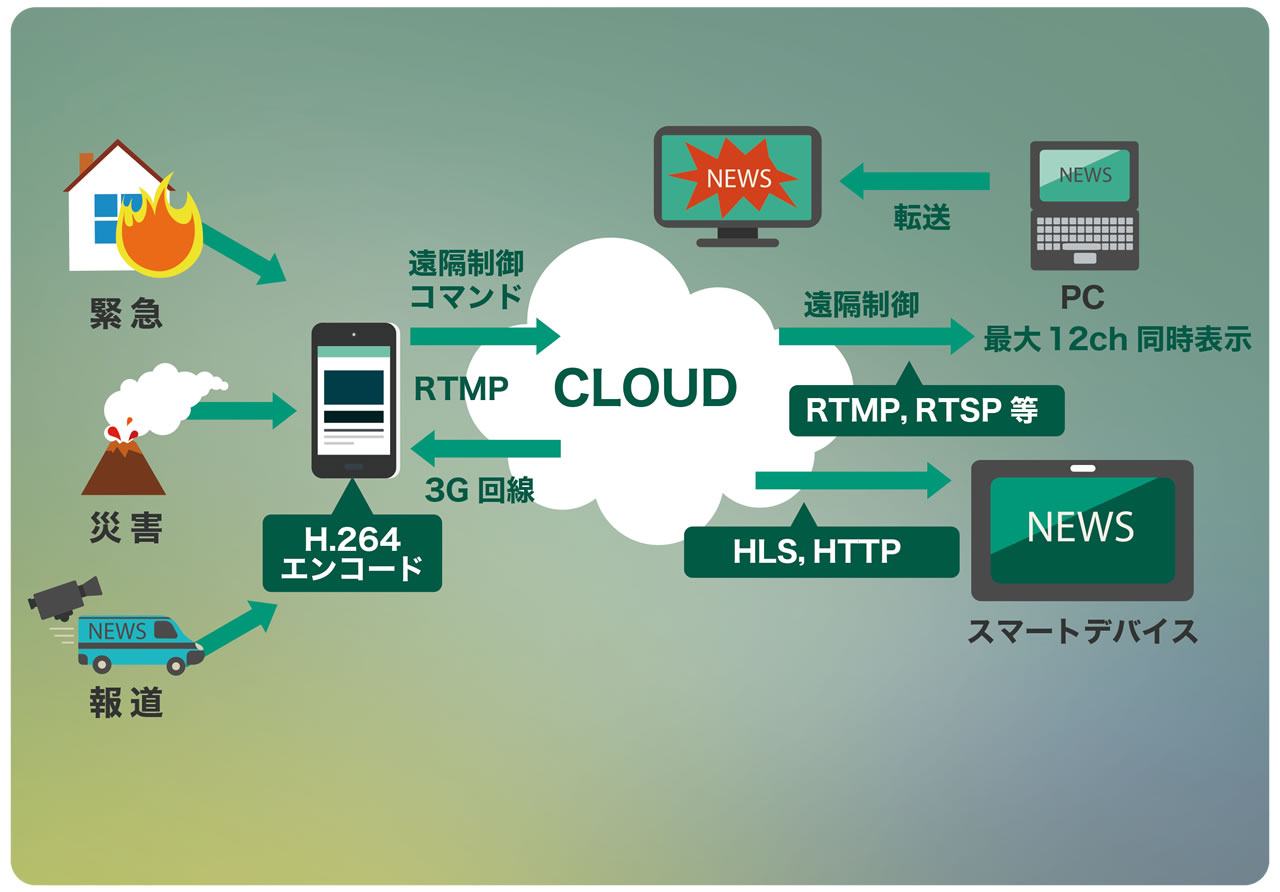Inter BEE 2015: Fujimic exhibits the latest version of F-BOX, its MXS file forwarding system; a weather and disaster alert service; and a live streaming solution using smartphone + cloud integration -- all reference exhibits
2015.11.11 UP

For Inter BEE 2015, ongoing from 11/18 through 11/20 at the Makuhari Messe in Chiba, Fujimic (headquarters: Minato-ku, Tokyo) is exhibits its wares at its own booth (Hall 2, Booth 2511). There can be seen reference versions of the latest upgraded F-BOX MXF file forwarding system, a weather and disaster alert service, and other solutions. The company also showed a reference version of a live streaming service using smartphone and cloud integration.
This is Fujimic's third exhibit since its first showing in 2013. The company has largely been involved in the development of systems used by Fuji Television, but in recent years it has been building system architectures and providing services to other broadcasters. Takashi Muraoka, sales sub-manager for the company's sales center, said, "We want to pitch what Fujimic has to offer not just for the Fuji TV group of companies, but to the broadcast industry as a whole, and up our brand recognition."
■In addition to a new version with added features, stronger integration with other broadcast equipment
The F-BOX MXF file transfer system works with program assets in MXF format to superimpose subtitles, monitor loudness, and adjust parameters. The company has newly added a voice mapping feature and a low bitrate video generator function for video previewing. They also envision using F-BOX as a core solution and linking it with other equipment for a total solution, thereby increasing the value F-BOX has to offer to production workflows.
At the booth, demonstrations will be given of program assets in MXF format being imported into F-BOX, then subtitles being added and loudness adjusted before final export into XDCAM format. Another demonstration will show how the tool can tether to a transmission device for immediate output. (See figure 1)
■Automatic audio generation
The weather and disaster alert service was built on the company's expertise implementing a disaster alert system for Fuji Television and has been built from the ground up as a cloud-based service. It receives data from the Japanese Meteorological Agency and L-alerts sent by the Foundation for MultiMedia Communications. In the event of an earthquake or major rainfall, it modifies that data for television marquees, digital signage, web sites, and other media, then broadcasts it. The service also includes an "automatic draft generator," and it also links with AI Incorporated's AITalk Web API, a voice synthesis engine. This allows for real-time provision of voice data. Ayumu Matsubara of Fujimic's sales center says, "We want to offer this service not only to broadcasters, but to radio stations, as well."
At the booth, live demonstrations will be given of converting disaster text data into speech in real time and playing it through speakers. (See figure 2)
■Reference exhibit of live streaming through smartphone and cloud integration
The company also exhibited as a reference version a cloud-based live streaming system using smartphones. The key advantage of the service is that broadcasters would not require major equipment or telecommunications infrastructure, instead installing a dedicated camera app on smartphones to offer live streaming on location. Kiyoshi Takamizawa, a manager at the company's sales center, says, "By building the streaming platform on the cloud and providing service in that way, we can offer a scaleable system for broadcasters that spans from a small launch on through a full-fledged, larger system. The system also allows for hosting one-day-only events and other special programming." Okamura adds, "This system allows for controlling a smartphone camera remotely from a computer (switching between the front and back cameras, etc.) and starting and stopping a stream, as well as checking position based on GPS data." (See figure 3)
In addition, the company showed a "total subtitling solution" for subtitle creation and real-time support, as well as the Fujimic Niigata review system for broadcaster commercial, program, and business workflows.
Fujimic Incorporated
Address: 1-1-20 Aomi, Koto-ku, Tokyo, 135-0064
Inter BEE booth: video and broadcast equipment, Hall 2, Booth 2511










